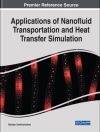This book summarizes the properties and applications of conventional and commercially available fiber-forming, bioresorbable polymers, as well as those currently under study, for use as biotextiles. Factors affecting the performance of these biomaterials are presented, and precautionary measures to reduce premature, hydrolytic degradation during manufacturing and processing are discussed. Because of the structural requirements of medical devices and the technological advancements in synthetic fibers and textile technology, the new field of ‘Biotextiles’ has evolved to exploit the potential of various woven, knitted, braided and non-woven textile structures for biomedical applications. Textile substrates provide certain unique mechanical properties to the medical device and because of an inherently high level of porosity, they can encourage cell growth and promote migration and proliferation. Bioresorbable devices that assist in the repair and regeneration of damaged tissues have in recent years replaced many of the permanent prosthetic devices. Thus, the topic of “Bioresorbable Biomaterials” generates much interest and research activity in the field of biomaterials science today. For this reason, the use of bioresorbable polymers as fibers is currently dominating the field of resorbable biomaterials for applications from sutures to tissue engineering scaffolds.
Cuprins
Preface.- Chapter 1: Overview of Resorbable Biomaterials.- Chapter 2: Degradation Process.- Chapter 3: Biotextiles—Fiber to Fabric for Medical Applications.- Chapter 4: Hydrolytically Sensitive Fiber-Forming Bioresorbable Polymers.- Chapter 5: Processing Parameters and the Rate of Resorption.- Chapter 6: Enzymatically Sensitive Fiber-Forming Bioresorbable Polymers.- Chapter 7: Current Applications of Biotextiles and Future Trends.- References.- Index.












